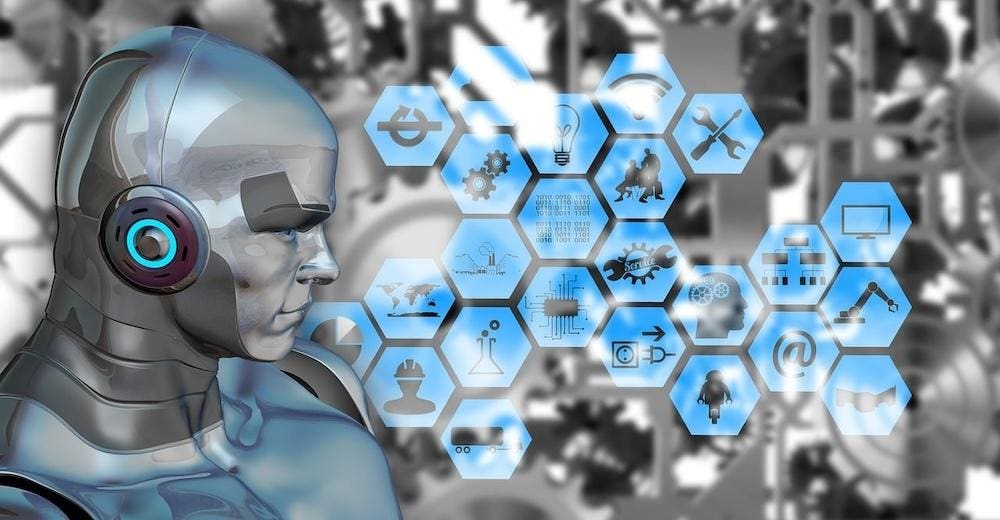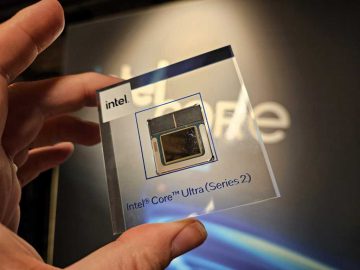Agents and Robots
Pixabay
The world of computing has long been governed by traditional operating systems like Windows, Linux and Unix. These platforms form the backbone of how we interact with computers, enabling software to run and services to function seamlessly. However, the rise of generative artificial intelligence is initiating a paradigm shift in the technology ecosystem.
Generative AI is no longer just an advanced tool for specialized use cases. It is evolving into a new, parallel stack—a foundational layer akin to the traditional operating system—that’s fundamentally redefining how organizations operate, innovate and compete. As we move into this new era, we’re seeing agents emerge as the new applications, a shift that is set to reshape business strategies across industries.
This article explores how generative AI is quickly emerging as a parallel stack, analogous to the evolution of the traditional enterprise IT ecosystem. For CXOs, understanding this shift is crucial as it offers the potential to transform operations and redefine competitive advantage in the market.
GenAI is the new OS
Janakiram MSV
Generative AI: The New Operating System Stack
An operating system provides the essential interface between hardware and software. In a similar way, generative AI is now emerging as a parallel operating system, orchestrating the interaction between massive computational infrastructures and sophisticated applications, now redefined as AI agents. This shift is not about simple automation or gradual improvements. It is a fundamental reimagining of the digital stack—from hardware to software—integrating AI into every layer.
The traditional stack consists of hardware at the bottom, then operating system kernels, utilities, shells, and finally applications that serve the end users. Each layer is critical to creating the cohesive environment that powers digital interactions.
However, generative AI is introducing dramatic changes:
• Hardware Layer: Traditionally dominated by Intel, ARM and SPARC, the hardware layer is now evolving to meet the demands of AI workloads. Companies like Nvidia, Groq, Cerebras, Graphcore and SambaNova are providing the next generation of hardware, specializing in AI-specific processors. These AI accelerators power the core infrastructure and complex computations required by AI models.
• Infrastructure Providers: In the traditional model, OEMs like Dell, HPE and IBM formed the pillars of enterprise infrastructure, providing servers, storage and networks to run operating system-driven applications. Today, cloud platforms like AWS, Microsoft Azure and Google Cloud lead the AI stack, offering infrastructure and services optimized for generative AI. Similar to the PC and server market, there are players beyond the hyperscalers offering GenAI as a Service. Their scalability and flexibility are vital in supporting AI models that require substantial processing power.
• AI Model Ecosystem: The traditional operating system kernel manages low-level functions like memory and processes. In the generative AI stack, language models such as Llama, Gemma, Mistral and Phi serve as the core, allowing the system to generate human-like text, images and even code. Apple Intelligence and Microsoft Copilot+ PCs are early examples of how GenAI models are becoming an integral part of the OS. Just as a kernel is essential for the operating system’s functionality, these models are the bedrock of AI systems.
• Core Utilities and Frameworks: Mapping core operating system utilities, AI tools like embedding models, vector databases and orchestration frameworks such as LangChain and LlamaIndex now serve as crucial components. They streamline the process of handling complex workflows, enable agents to retrieve knowledge and perform tasks effectively. These frameworks also provide a “shell” for developers and organizations to build, train and deploy AI agents.
Agents: The New Applications
In a traditional stack, applications are built on top of the operating system to perform specific tasks and deliver value to users. In the generative AI stack, AI agents take on the role of these applications. However, their capabilities far exceed those of traditional software. AI agents are autonomous, capable of interacting with their environment, learning from data and executing tasks in a wide variety of domains, from customer service to software development.
For CXOs, the rise of AI agents presents new strategic opportunities. These agents can act as personalized assistants, streamlining workflows, managing operations and even making decisions based on data-driven insights. Unlike traditional software, which requires human intervention for most actions, AI agents operate autonomously, continuously learning and improving. This shift has major implications for operational efficiency and customer engagement.
Take customer support as an example. In the past, businesses relied on a combination of scripted chatbots and human agents to handle inquiries. Today, AI agents powered by generative models not only understand and respond to questions in natural language but they can also predict customer needs and resolve issues before they arise. This level of sophistication allows companies to enhance customer experience while reducing operational costs.
Strategic Implications for CXOs
For CXOs, this transformation from traditional operating system-driven applications to a generative AI stack is more than a technical evolution. It’s a strategic shift in how businesses operate, innovate and compete.
Leaders navigating this transition should consider the following:
Embrace the New Stack: Adopting generative AI as a parallel stack is no longer optional. Organizations that fail to integrate these technologies into their operations risk falling behind competitors who do. Early adopters are already experiencing benefits like enhanced decision-making, increased operational efficiency and improved customer experiences.
Redefine the IT Infrastructure: Transitioning to AI-driven hardware and cloud-based infrastructure requires reevaluating your IT architecture. Traditional servers and on-premises data centers may no longer suffice for AI workloads. Instead, organizations need specialized AI hardware and cloud platforms to provide the scalability and flexibility required by generative AI systems.
Leverage AI Agents for Automation: AI agents are more than just advanced applications. They are autonomous systems capable of handling complex tasks across functions. By deploying these agents in marketing, operations and finance, companies can reduce operational costs while improving decision-making and service delivery.
Invest in Talent and Training: Although generative AI offers massive potential, it also demands specialized skills. CXOs must ensure their teams are equipped to work with AI models, embeddings and agents. Investing in AI training and bringing in talent with expertise in AI development will be key to maintaining a competitive edge.
Foster a Culture of Innovation: The rise of generative AI as the new operating system stack offers unprecedented opportunities for innovation. Companies that encourage experimentation with AI will be better positioned to develop new products, services and business models. CXOs should focus on cultivating an innovative culture that supports AI-driven exploration.
The Road Ahead
The evolution of generative AI into a parallel operating system stack is already underway. As this technology matures, we will see further advancements in AI models, agents and infrastructure. For CXOs, this shift presents both challenges and opportunities. Those who embrace this new stack will be poised to lead in their industries, unlocking new efficiencies, improving customer engagement and creating innovative products and services.
In the coming years, AI agents are likely to become as ubiquitous as traditional applications. Businesses that effectively leverage them will gain a significant competitive advantage. The future is being shaped by generative AI and those who harness its potential now will thrive in the new digital era.




